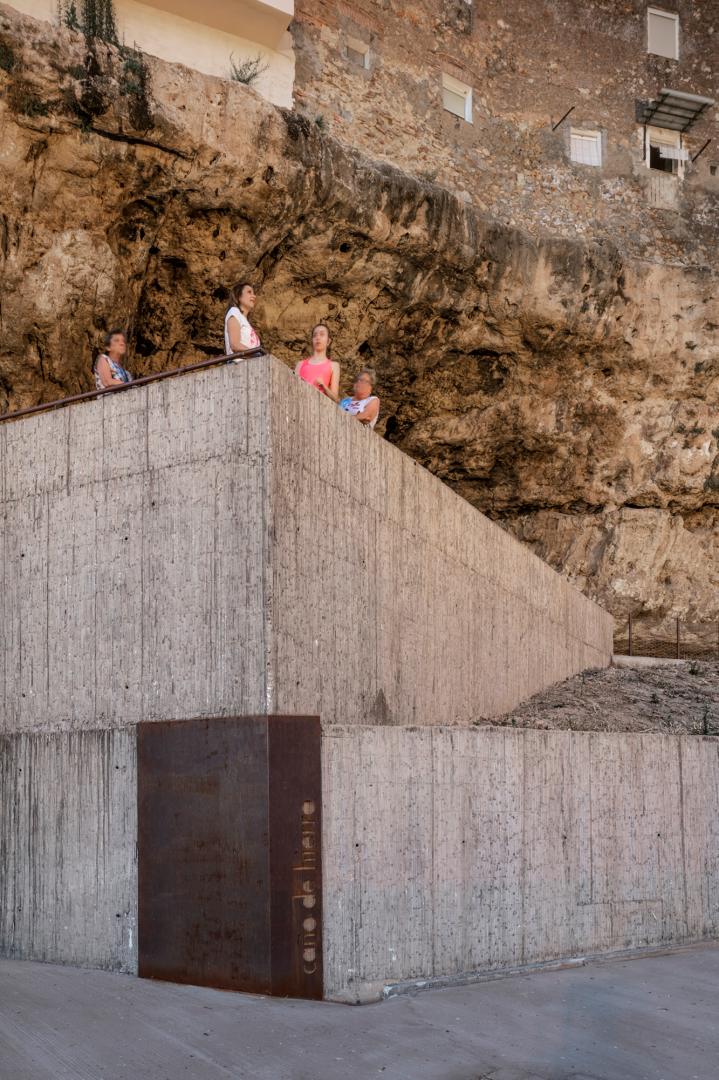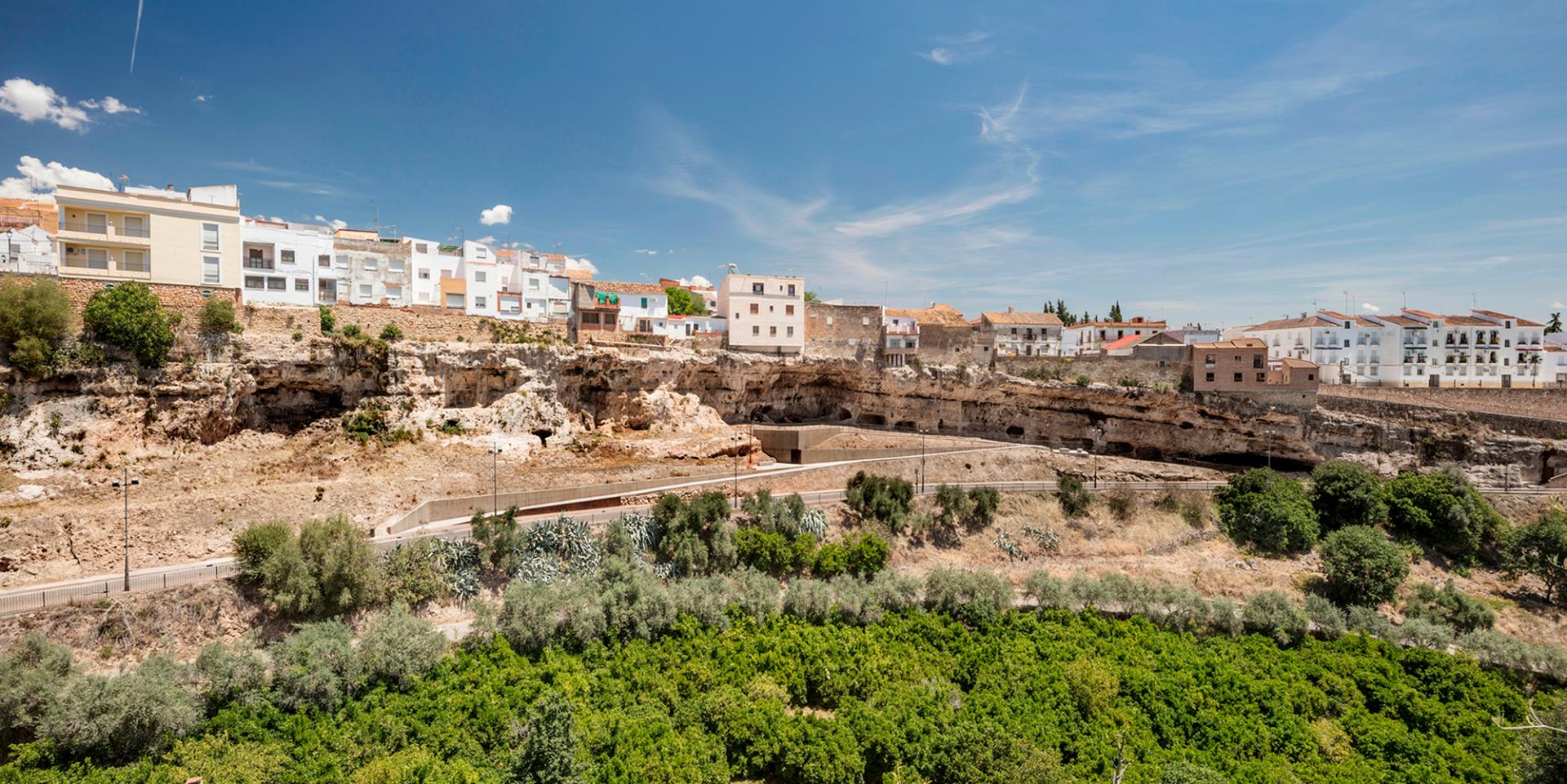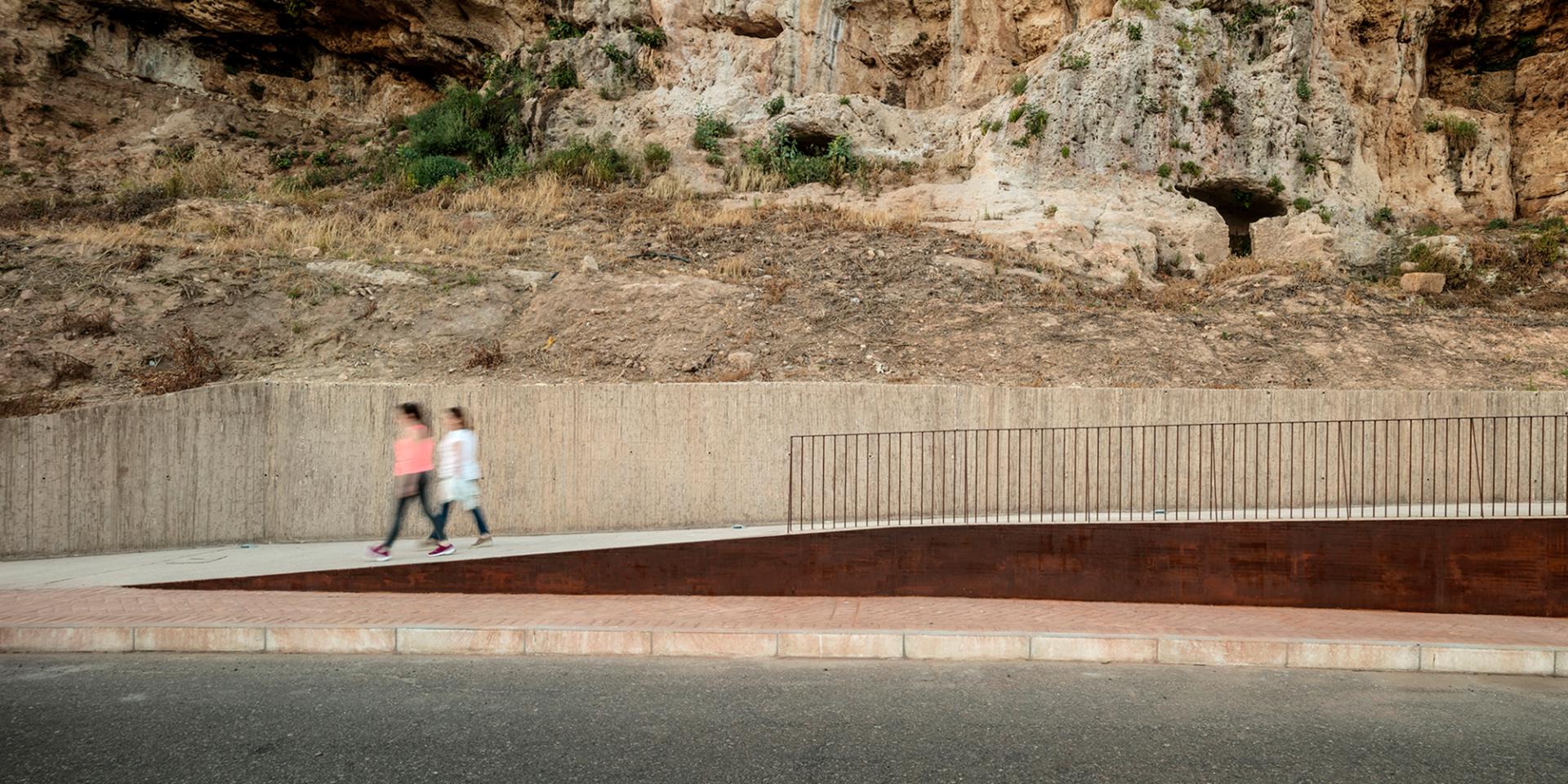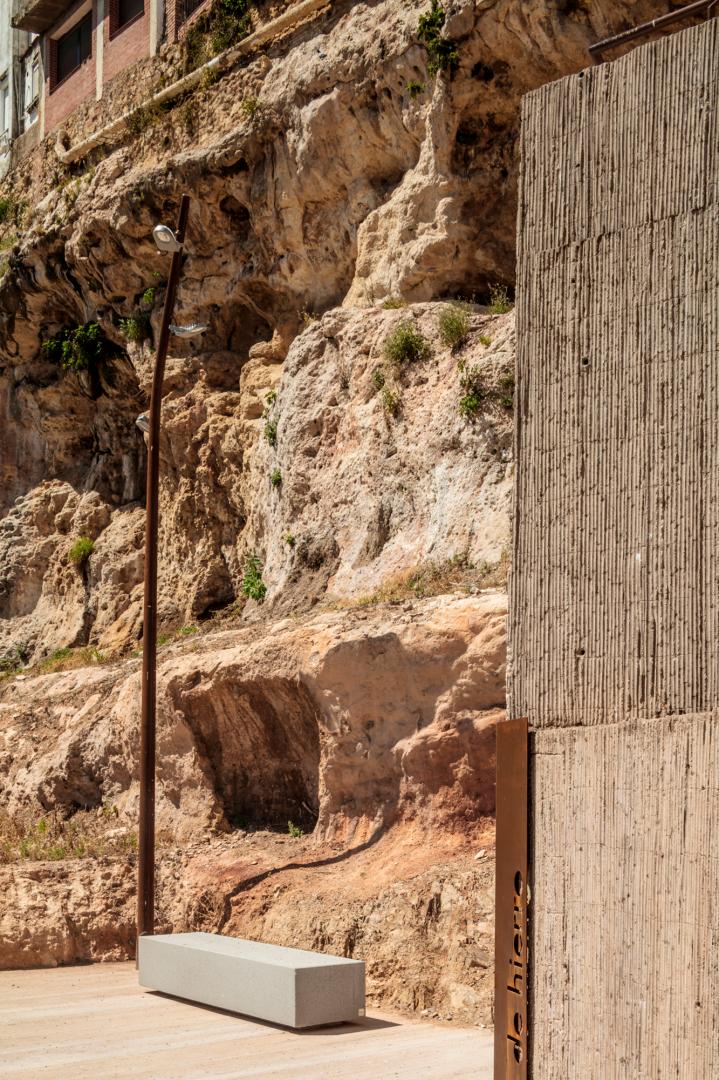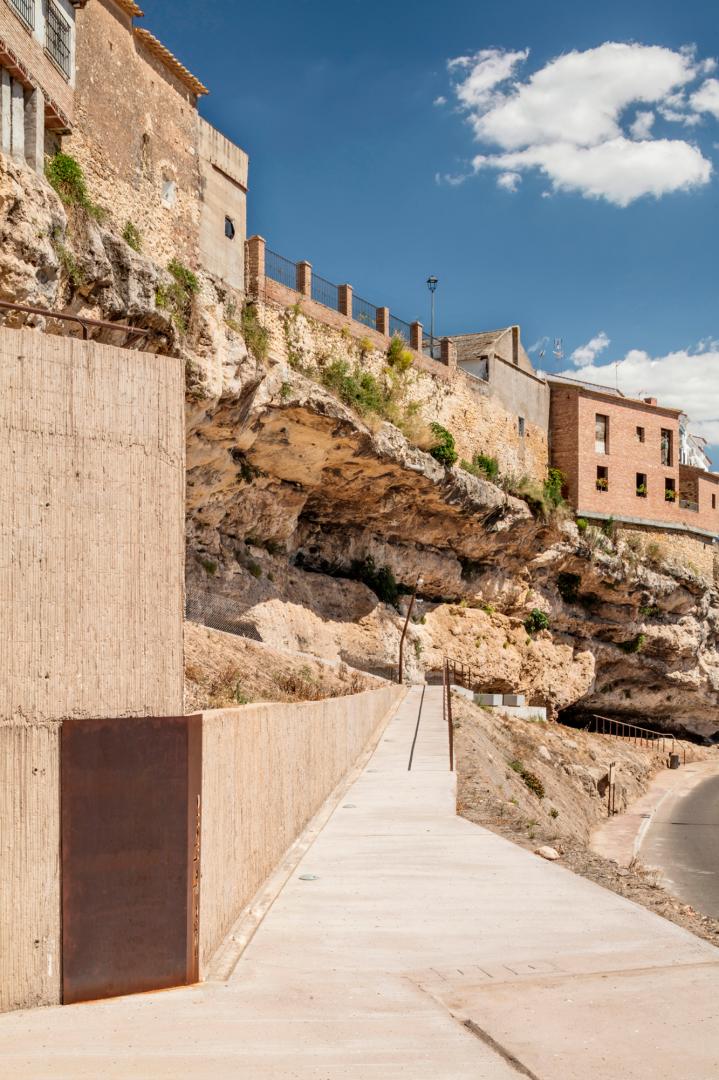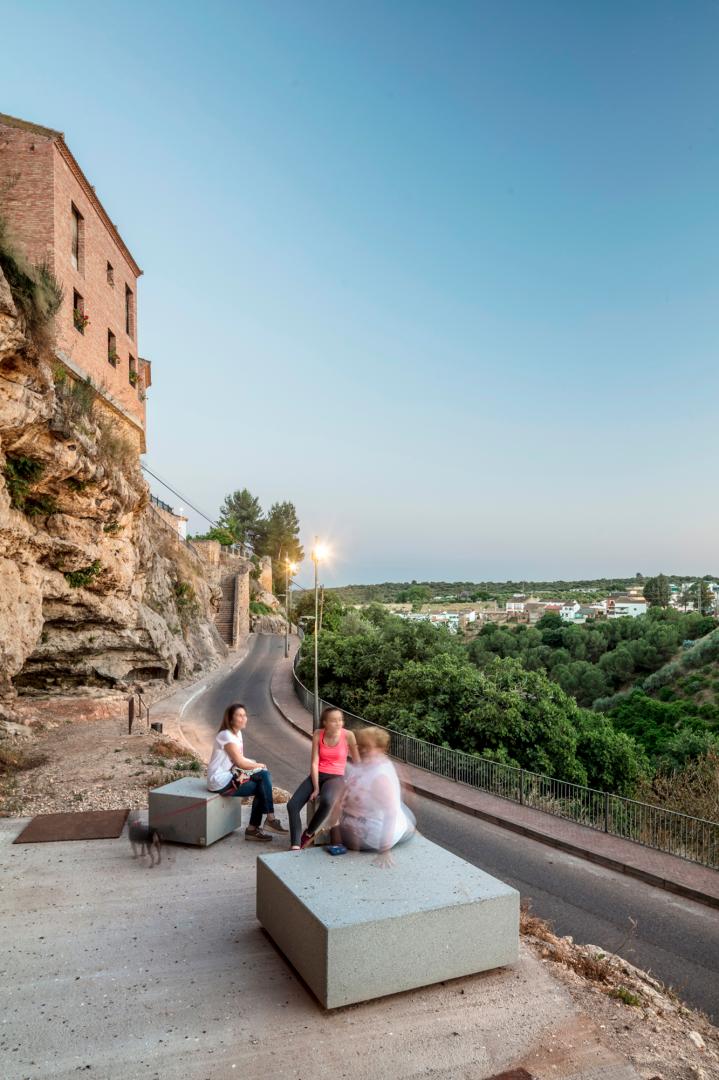Caño de Hierro Recovery
Basic information
Project Title
Full project title
Category
Project Description
How should architecture respond to a landscape with enormous aesthetic vigour, fiercely beautiful?
The recovery of Caño de Hierro, an initiatory project for all its authors, invites us to reflect that the value of architecture, perhaps, lies in its origin, in the simple gesture of drawing a line.
Project Region
EU Programme or fund
Description of the project
Summary
Caño de Hierro is a steep-sided canyon on top of which is placed Hornachuelos, an Andalusian white-housed town placed between Córdoba and Seville, near la Vera del Guadalquivir.
The caves of Caño de Hierro, formerly used as a refuge and as a warehouse for agricultural surplus, were buried under rune and undergrowth for decades, and they were only kept alive in the memory of the local elders. They are a remnant of old times, a different pace and a different lifestyle. Its enhancement is part of an operation that aims to recover the heritage of Hornachuelos for its neighbours and to point out the enormous natural, historical and architectural richness of the town.
For the enhancement of Caño de Hierro a pedestrian promenade is proposed. This walkway starts at the access road of the town and culminates in the largest of the caves, la Cueva de las Carretas. The operation must span nine meters in height and the surface available to solve this ascension is limited. Six retaining walls are drawn as well as six cuts in the terrain, resulting in the pedestrian promenade: a geometric layout that solves the ascent and the transition from a road to a natural, rugged environment.
Key objectives for sustainability
The intervention in Caño de Hierro recovers a buried place, forgotten for many decades. It is therefore not a conservation operation but a recovery operation. The matter with which we work here is memory, and in the same way that a stonemason sculpts from the subtraction of matter, here the ground is cleaned and excavated to bring the caves out of their slumber and return them to the landscape.
In this sense, special attention is paid to the colour and texture of the retaining walls, which are large due to the steepness of the terrain. The natural reed formwork used reproduces the irregularity of the hollows and protrusions of the caves. The colour harmonizes with that of the rocks of the place. The time will be in charge of increasing the chromatic synchrony of the whole.
The operation with the greatest impact in environmental terms was the excavation and land transportation. Fortunately, in the municipality of Hornachuelos, there are several authorized landfills for the deposition of land and inert waste, so in this aspect the reduction of displacements can also be highlighted as an aspect of energy and economic saving.
Key objectives for aesthetics and quality
Caño de Hierro is a raw, beautiful landscape. Its range of yellows turns into brown as the day ticks over and the sun falls. The irregular geometry of this place does nothing but magnify the changing character of this place, submitted to the variations of the sunlight. This landscape has its own torn aesthetic that the walls, with their colour and formwork, aim to recognize. They now become part of this great plinth that is Caño de Hierro for Hornachuelos.
Key objectives for inclusion
The landscape intervention in Caño de Hierro offers a tour of the caves found in this place and culminates in a viewpoint from which to observe the landscape that surrounds us. The caves were buried under rune and undergrowth for long decades and only remained alive in the memory of the elders of the place.
It is a non-urban environment, of a marked wild idiosyncrasy. A strong geometric layout is proposed that cuts through the topography. The project opposes a clear geometry facing the irregularity of the landscape. This strategy allows to effectively control slopes and distances throughout the ascent path.
In order to make the itinerary accessible and comfortable for all visitors, a route with a very low slope is projected throughout its entire route. Two intermediate flat spaces are proposed along the route to facilitate the rest of the visitors. One of them is in the background of the main promenade and the other at one end, marking the change of direction of the itinerary. Therefore, both spaces fulfil their function as halt, without detracting the unique trace of the path that marks the ascent slope. They are spaces that offer a place to rest, observe the landscape and they become meeting points between neighbours, those who kept this place alive in their memory.
Results in relation to category
It is important to point out the potential that the intervention in Caño de Hierro can bring to the economic sustainability of the town. Its recovery is part of an operation that has the objective of recovering the heritage of Hornachuelos for its neighbors and claiming the town as a tourist destination based on its enormous natural, historical and architectural wealth. It is about recovering a natural setting and projecting it as a pole of attraction for visitors that encourages proximity tourism, interested in nature and respectful of the environment.
How Citizens benefit
For long decades, Caño de Hierro caves were buried, and only remained alive in the memories of the elders of the village, who remembered that they were used as a warehouse and even inhabited as a refuge. They were the ones who aimed the Town Hall to excavate the place and recover it, to bring this formidable place back to life.
Hornachuelos, despite being a small town of 3,000 inhabitants, has a solid industrial fabric. This fact allowed the construction company and most of the workers to be from the very same village, reducing economic and environmental costs.
Caño de Hierro is a project of not only environmental recovery, but also social recovery, since it had the participation of the neighbours, from the workers who shaped the steel, to the elders of the place, who return there today to meet while observing the landscape from the landscape.
Innovative character
In terms of innovation, the use of natural reed formwork stands out, one of the defining elements of the project also on an aesthetic level. This natural formwork is not a particularly innovative solution, but it must be marked that the project was carried out in a small Andalusian town with a construction company that had only five workers. In these circumstances, the natural reed formwork system was a certainly complex operation. Even so, it was carried out with remarkable efficiency and mastery. The innovation in the project, then, lies in transferring sustainable construction techniques widely used in an urban environment, to the rural world.

